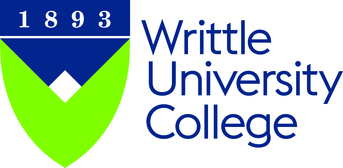In vivo biocompatibility and pacing function study of silver ion-based antimicrobial surface technology applied to cardiac pacemakers.
Shawcross, James, Bakhai, Ameet, Ansaripour, Ali, Armstrong, James, Lewis, David, Agg, Philip, Ferro de Godoy, Roberta and Blunn, Gordon (2017) In vivo biocompatibility and pacing function study of silver ion-based antimicrobial surface technology applied to cardiac pacemakers. Open Heart, 4 (1). e000357. ISSN 2053-3624
|
Text
openhrt-2015-000357.pdf - Published Version Available under License Creative Commons Attribution Non-commercial. Download (732kB) | Preview |
Abstract
INTRODUCTION Evidence suggests that the rate of cardiovascular implantable electronic device (CIED) infections is increasing more rapidly than the rates of CIED implantation and is associated with considerable mortality, morbidity and health economic impact. Antimicrobial surface treatments are being developed for CIEDs to reduce the risk of postimplantation infection within the subcutaneous implant pocket. METHODS AND ANALYSIS The feasibility of processing cardiac pacemakers with the Agluna antimicrobial silver ion surface technology and in vivo biocompatibility were evaluated. Antimicrobially processed (n=6) and control pacemakers (n=6) were implanted into subcutaneous pockets and connected to a part of the muscle using an ovine model for 12 weeks. Pacemaker function was monitored preimplantation and postimplantation. RESULTS Neither local infection nor systemic toxicity were detected in antimicrobial or control devices, and surrounding tissues showed no abnormal pathology or over-reactivity. Semiquantitative scores of membrane formation, cellular orientation and vascularity were applied over five regions of the pacemaker capsule and average scores compared. Results showed no significant difference between antimicrobially processed and control pacemakers. Silver analysis of whole blood at 7 days found that levels were a maximum of 10 parts per billion (ppb) for one sample, more typically ≤2 ppb, compared with <2 ppb for preimplantation levels, well below reported toxic levels. CONCLUSIONS There was no evidence of adverse or abnormal pathology in tissue surrounding antimicrobially processed pacemakers, or deleterious effect on basic pacing capabilities and parameters at 12 weeks. This proof of concept study provides evidence of basic biocompatibility and feasibility of applying this silver ion-based antimicrobial surface to a titanium pacemaker surface.
| Item Type: | Article |
|---|---|
| Divisions: | Equine & Veterinary Physiotherapy |
| Depositing User: | Dr Roberta Blake |
| Date Deposited: | 22 Nov 2020 19:15 |
| Last Modified: | 10 Nov 2023 11:49 |
| URI: | https://writtle.repository.guildhe.ac.uk/id/eprint/15193 |
Actions (login required)
 |
Edit Item |

